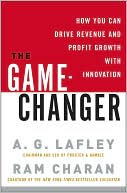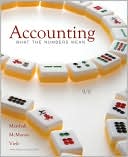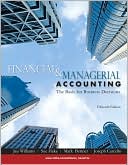Economics of Strategy
Search in google:
Discover the art of strategic thinking Revised and updated to reflect the cutting edge of academic thinking about business strategy, the Fourth Edition of Besanko, Dranove, Shanley, and Schaefer’s highly acclaimed text offers a solid economic foundation for strategic analysis. By presenting basic concepts of economic theory with ideas in modern strategy literature, the book provides an economic lens for viewing the broad sweep of the strategic activities of the firm. The book begins by focusing on the boundaries of the firm and examines competitive strategy from the perspective of industrial organization (IO) economics, particularly Porter’s Five Forces. It then explores strategic positioning and dynamics as well as topics associated with internal organization, including personnel economics, organization structure, and strategic fit. Features of the Fourth EditionChapters on human resources management, entry, positioning, dynamics, technological change, and organizational structure are substantially revised.An updated chapter on business history covers the recent dot-com bubble.Presents economic principles without overemphasizing the math.Rigorous treatment of organizational topics such as structure and culture enables you to experience the full scope of strategic thinking.The authors use Porter’s Five Forces as a tool for organizing industry analysis, building on the coverage of industrial organization and game theory. The text also considers the Value Net, another tool for organizing industry analysis.Includes coverage of make or buy decisions (Chapters 2-4) and benefit and cost advantage and sustaining advantage (Chapters 11-13).Fascinating examples, including many new to this edition, bring the economic models to life. Many of the examples involve businesses outside of the United States. Booknews Details both the external market environment of firms and their internal organization, for MBA students, advanced undergraduates, students in executive programs, and practicing managers. After a primer on economic concepts for strategy, four sections address the boundaries of the firm; competitive strategy from the perspective of industrial organization economies; strategic positioning and dynamics; and topics associated with internal organization. Boxes illustrate economic models with cases from real companies. Annotation c. Book News, Inc., Portland, OR (booknews.com)
Introduction Strategy and Economics 1Pt. 1 Economic Foundations of Strategy1 Basic Microeconomic Principles 112 Economies of Scale and Scope 413 Agency and Coordination 734 The Power of Principles: A Historical Perspective 97Pt. 2 Firm Boundaries5 The Vertical Boundaries of the Firm 1196 Organizing Vertical Boundaries: Vertical Integration and Its Alternatives 1507 Diversification 175Pt. 3 Market and Competitive Analysis8 Competitors and Competition 2059 Strategic Commitment 23810 The Dynamics of Pricing Rivalry 26411 Entry and Exit 29912 Industry Analysis 327Pt. 4 Strategic Position and Dynamics13 Strategic Positioning for Competitive Advantage 35914 Sustaining Competitive Advantage 41015 The Origins of Competitive Advantage: Innovation, Evolution, and the Environment 441Pt. 5 Internal Organization16 Performance Measurement and Incentives in Firms 46917 Strategy and Structure 50718 Environment, Power, and Culture 536Glossary 563Index 573








